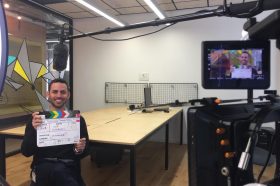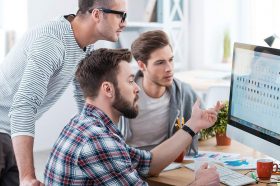Resources - Blog
Executive Spotlight: Haniel Ilouz

Stay on top of the latest e-commerce and marketplace trends.
“The combination of data and machine learning will drive the next innovations. Feedvisor is uniquely positioned to deliver exceptional value using our vast data, eCommerce domain-specific knowledge, and advanced machine learning techniques.”
1. What does being innovative mean in your eyes? How does Feedvisor stay innovative?
Innovation for me is all about finding creative, out-of-the-box solutions for a problem and delivering value by implementing it. Innovation can be at the product functionality level, and at the algorithm level. But it can also mean optimizing how we work, and redefining our processes. Our role as managers is mainly to encourage and facilitate innovation. Over time, I’ve found that the most important ingredients for fostering innovation are:
- Understanding the customer: When developers truly understand the challenges the customer is facing, innovative solutions emerge as a matter of course.
- Cross-team cooperation: Innovation explodes when you bring together people from marketing, sales, customer success, R&D, and product, and let them work together. We saw that happen at our first Feedvisor Hackathon a couple of months ago. The outcome was amazing, and we continue to look for ways to encourage cross-departmental work in our day-to-day.
- Access to data and algorithms: As a company that is built on data and algorithms, innovation in this area is critical for us. There are dedicated analysts assigned to work on algorithms, but it is just as important to involve the developers, product managers, success managers and other functions in brainstorming sessions and share the responsibility of advancing the algorithms with them. This, together with access to all the data we have (gathered through BI tools and others), creates the magic of innovation.
2. Can you explain the meaning of customer-centric R&D?
One of the initiatives we are running this year in engineering is “getting closer to our customers.” The goal is for all developers to have a deep understanding of our customers’ needs and behavior. Our developers will follow the deployment of new features to production and analyze their usage by the actual customers.We are also encouraging direct interaction with customers, through conferences, webinars, and customer visits.
3. What is Feedvisor doing to increase automation in the product?
External APIs are a major way of automating cross-platform integration. We at Feedvisor understand that our customers have many tools they use for operating their business. In order to automate the integrations between the systems, we are now creating APIs that permit programmatically configuring the different inputs as well as externalizing our data.Another aspect of automation involves collecting data from different data sources, applying algorithms on top of it, and delivering a unique value that is exceptional.
4. What is your team structure?
From day one, Feedvisor was a technology company, and as such, the engineering team is a significant part of the organization — around 40%. The team consists of five development teams working in agile methodology. There is an Ops team that is responsible for DevOps and managing our production environment. The QA automation engineers are part of the teams, and there is a QA director who leads the quality processes across the teams. In addition, there is a product management team, which is responsible for defining the product roadmap and the product specs for the teams to work on.
5. How do you maintain high performance 24/7?
We have an extended monitoring system with hundreds of monitors that alert us whenever there is a glitch in production. Our 24/7 NOC team handles all such alerts, escalating to the teams when needed.
We measure our system uptime overtime and measure ourselves with strict SLAs. We are also constantly tracking the repricing algorithms’ behavior, both at the system level and at the account level. In addition to keeping track of the repricer’s behavior, these key indicators are used to measure the performance of new algorithms.
6. In which areas are you looking to grow your team?
We are starting to see an industry-wide movement towards making machine learning available for all. Today, it is still the domain of specific individuals in organizations that use machine learning. We believe that the next big shift will happen once it is becomes something that all developers are familiar with and use as tools in their arsenal. As pioneers of algorithmic repricing, we at Feedvisor believe we are uniquely positioned to be at the forefront of this larger industry shift.
7. Looking into the future of Feedvisor’s products, what can customers expect?
An even more data-centric approach, which will include the capacity to consolidate all data from multiple sources, share it with the customers, and run algorithms on top of it to generate additional insights and exceptional value. Machine learning is becoming a great tool for driving innovation for companies like us, where we have a lot of data and expertise in the domain we are operating in.



